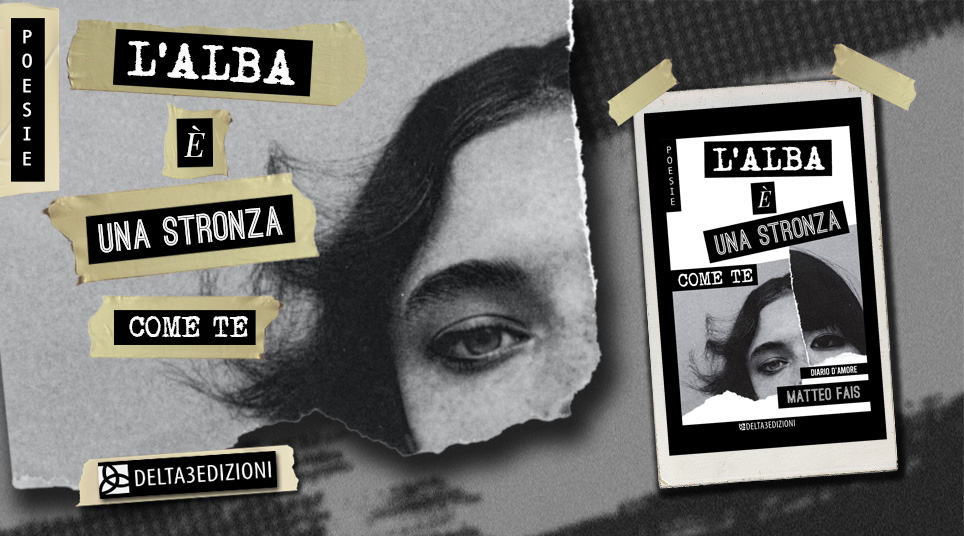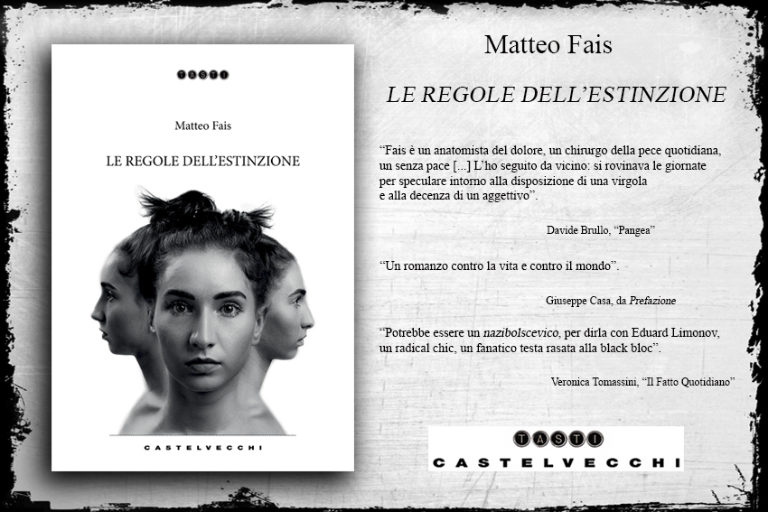“DO VOCE ALL’AMORE, IN TUTTE LE SUE FORME, ISPIRATA DAL CANTICO DEI CANTICI”: INTERVISTA CON ANASTASIA MINSTER (di Matteo Fais)

Uno degli aspetti più belli del tanto criticato tempo dei social network è che, oggigiorno, è divenuto possibile conoscere artisti e creativi provenienti da tutto il mondo, senza peraltro grandi difficoltà. È l’algoritmo, da tanti ingiustamente demonizzato, a farli comparire sulla timeline, se ha notato un certo interesse da parte nostra.
È così che siamo entrati in contatto, oramai da anni, con Anastasia Minster, musicista russa naturalizzata canadese, avendo modo di intervistarla diverse volte (https://www.pangea.news/dobbiamo-discendere-agli-inferi-per-comprendere-il-valore-della-luce-matteo-fais-dialoga-con-la-cantante-dark-jazz-anastasia-minster-di-musica-bergman-e-jung/; https://www.pangea.news/anastasia-inster-father-intervista-fais/). In questo caso, l’occasione c’è data dall’uscita del suo terzo album in studio, Song of Songs che, coerentemente, prosegue con il percorso di ricerca musicale iniziato fin dal primo disco.
Ovviamente, per rendere il tutto fruibile anche a chi non sia particolarmente addentro alle questioni più tecniche del settore, ci siamo voluti concentrare prevalentemente sui tanti riferimenti culturali e letterari presenti nell’opera di Anastasia.

Caro amico lettore, come potrai immaginare, dietro questo blog ci sono diverse persone che collaborano agli articoli che tu quotidianamente leggi. Se desideri supportare la nostra attività, ti saremmo grati se volessi dare il tuo sostegno all’Iban IT53E3608105138290082390113. L’intestatario è Matteo Fais. Grazie di cuore, La Redazione.
Questo tuo terzo album, Song of Songs, si ispira nientemeno che al Cantico dei cantici, per parlare d’amore. Ha, insomma, un retroterra biblico. Ti vorrei domandare, dunque, se dal tuo punto di vista, vi sia una connessione tra la questione del sentimento e quella della fede.
Assolutamente, vi è una profonda connessione, a mio avviso, tra sentimento e fede. Per dare una base a questa convinzione appena espressa, lasciami dire un paio di cose in merito. Ho letto il Cantico dei cantici in gioventù e ne sono rimasta incantata fin da allora. Ne ho amato le immagini seducenti, la ricchezza del simbolismo, il suo modo di essere così superbamente poetico e l’ammirazione che ne traspare per l’amore – a prima vista, direi, del tipo romantico, carnale. Al contempo, vi è indiscutibilmente più di un livello di lettura nel testo, infatti alcuni lo interpretano non tanto come un dialogo tra due amanti, ma tra Dio e l’animo umano. Ci vedo una grande bellezza in questa esegesi, tanto da considerare l’opera come l’estremo inno all’amore – alla sua forma più alta. Sì, credo vi sia una connessione profonda tra amore e fede. Non sono una persona religiosa, ma quando guardo a qualsiasi culto, come alle varie forme di misticismo, vedo il nocciolo di ciò che l’amore è. Esso ha tante facce e molteplici significati, ma se lo consideriamo nella sua forma più pura e universale – quella incondizionata che trascende lo spazio e il tempo – è ciò che potremmo chiamare Dio o semplicemente il divino. Ritengo che il principale intento di qualsiasi religione sia di guidare le persone all’amore attraverso la fede. Quel che ho cercato con il mio album è proprio di esplorare tale percorso nel migliore dei modi, pur evitando il contesto prettamente teologico. Song of Songs ricostruisce il viaggio dall’innocenza – un amore puro e naturale, ma privo di esperienza – al lato più oscuro, con tutto ciò che questo comporta: attaccamento traumatico, infatuazione, ossessione, abbandono, perdita, fino alla guarigione e alla scoperta di una forma più alta e assoluta del sentimento – quella che trascende ogni cosa, il Cantico dei cantici.
Tra gli altri motivi di ispirazione dell’opera, vengono segnalati i miti greci, Hermann Hesse, e l’opera del regista Wim Wenders. Sarei particolarmente interessato a conoscere l’influenza che il noto cineasta ha avuto sulla tua produzione musicale.
Wim Wenders è un regista straordinario. Il mio film preferito è Il cielo sopra Berlino. L’ho visto tante volte, l’ultima delle quali l’anno scorso e ha finito per ispirarmi la prima traccia dell’album, Innocence. È una pellicola incredibilmente profonda e poetica per me e, al contempo, un’ode alla bellezza dell’umana esperienza e all’amore romantico. Racconta di un sentimento che è purezza e innocenza – quasi infantile, in un certo modo – e della gioia di esistere nel momento presente, sentendo una vicinanza con gli altri e con il mondo intorno a sé. Questo è anche ciò che ho cercato di riportare nella mia musica. Vi è inoltre una bellissima lirica, Canzone dell’infanzia di Peter Handke, in apertura dell’opera di Wenders. Sembra semplice ma, in realtà, è davvero ricca di sfumature e toccante. Non posso dire che sottilmente non abbia influenzato la mia Innocence.

Questo album, da quel che apprendo, vede la presenza di un gran numero di collaboratori: Felipe Tellez, Lynn Kuo, Raphael Weinroth-Browne, Tara Kannangara, ecc. Come sei entrata in contatto con loro e come li hai convinti a prendere parte al progetto?
Il disco è frutto del contributo di una straordinaria squadra di talenti, per cui mi ritengo particolarmente fortunata. Grazie ai finanziamenti ricevuti per la mia campagna Kickstarter, oltre che dal Toronto Arts Council e dal Canada Council for the Arts, mi è stato possibile far lavorare dei musicisti e professionisti assolutamente incredibili. Con alcuni ho collaborato per anni; per esempio, Raphael e Tara già suonarono nel mio album del 2020, Father. Naturalmente, li ho invitati a prender parte al mio progetto perché so bene quanta bellezza e magia riescano a dare ai pezzi. A Raphael, in particolare, lo conosco dal 2017 e abbiamo suonato e registrato insieme fin da allora. Credo che la nostra percezione ed espressività musicale siano molto simili – ogni volta, è fantastico suonare insieme. Ho anche convocato a partecipare Jeff McMurrich, il mio produttore e ingegnere del suono preferito, con cui già registrammo, mixammo e masterizzammo entrambi i miei album precedenti, perché adoro lavorare con lui. Felipe, invece, l’ho incontrato alcuni anni fa, tramite un amico comune e collega, e per lungo tempo abbiamo discusso di un progetto comune con orchestra. È stato lui a presentarmi Lynn Kuo, violinista di eccezionale talento. Entrambi erano interessati all’idea di un concept album e, una volta che sono arrivati i fondi per il progetto, hanno immediatamente confermato la propria partecipazione. Sono lieta di quanto fatto insieme.
Vorrei che ci raccontassi materialmente del processo di creazione dell’album. Quanto tempo ha richiesto la registrazione e la postproduzione? Se non ho compreso male, hai lavorato in tre studi diversi (Union Sound, Revolution Recording, Genesis Sound studios). Da cosa è stata motivata tale scelta?
Song of Songs è un progetto profondamente complesso – sicuramente il più stimolante che abbia intrapreso fino a oggi. La registrazione e la postproduzione hanno richiesto più di 10 mesi, ma tra preparazione, composizione, prove e via dicendo, c’è voluto più di un anno. Solo per ricevere i finanziamenti, sono trascorsi 6 mesi. I vari strumenti sono stati registrati in diverse sessioni. In prima istanza siamo partiti dalle tracce di base – il pianoforte, il contrabbasso e le percussioni –, lì all’Union Studio. C’era un Yamaha straordinario, che ho particolarmente apprezzato, dei microfoni impeccabili, ed era tutto molto spazioso, con 2 cabine isolate che rendevano il tutto perfetto per le registrazioni di un terzetto jazz. Il passo successivo è stato registrare l’orchestra e, allora, si è presentata la necessità di spostarci in uno studio che potesse comodamente ospitare fino a 30 elementi, così abbiamo scelto il Revolution Recording, uno dei più grandi che ci siano a Toronto. Chiaramente è più costoso, ma hanno anche maggiore esperienza nelle registrazioni orchestrali, che realizzano alla perfezione. La cosa è stata particolarmente agile e siamo riusciti a concludere 4 tracce in meno di 3 ore. Per la voce, è bastato un piccolo studio, ma volevamo microfoni d’eccellenza, così abbiamo puntato sul Genesis Sound. È un luogo confortevole, rilassante e certo conveniente, pur offrendo le migliori attrezzature. Il suono era eccezionale, così abbiamo registrato tutte le parti vocali lì.
Matteo Fais
Canale Telegram di Matteo Fais: https://t.me/matteofais
Instagram: http://www.instagram.com/matteofais81
Facebook: https://www.facebook.com/matteo.fais.14
Telefono e WhatsApp di Matteo Fais: +393453199734
L’AUTORE
MATTEO FAIS nasce a Cagliari, nel 1981. È scrittore e agitatore culturale, fondatore, insieme a Davide Cavaliere, di “Il Detonatore”. Ha collaborato con varie testate (“Il Primato Nazionale”, “Pangea”, “VVox Veneto”) e, in radio, con la trasmissione “Affari di libri” di Mariagloria Fontana. Ha pubblicato L’eccezionalità della regola e altre storie bastarde e Storia Minima (Robin Edizioni). Ha preso parte all’antologia L’occhio di vetro: Racconti del Realismo terminale uscita per Mursia. Il suo romanzo più recente è Le regole dell’estinzione (Castelvecchi). La sua ultima opera è una raccolta di poesie, L’alba è una stronza come te – Diario d’amore (Delta3 Edizioni).

AMAZON: https://www.amazon.it/regole-dellestinzione-Matteo-Fais/dp/8832828979/
IBS: https://www.ibs.it/regole-dell-estinzione-libro-matteo-fais/e/9788832828979
ENGLISH VERSION
One of the most beautiful aspects of the much-criticised time of social network is that, nowadays, it has become possible to get to know artists and creative people from all over the world without great difficulty. It is the algorithm, unfairly demonised by many, that makes them appear on the timeline if it has noticed a certain interest on our part.
This is how we got in touch years ago with Anastasia Minster, Russian musician naturalised Canadian, having had the opportunity to interview her several times (https://www.pangea.news/dobbiamo-discendere-agli-inferi-per-comprendere-il-valore-della-luce-matteo-fais-dialoga-con-la-cantante-dark-jazz-anastasia-minster-di-musica-bergman-e-jung/; https://www.pangea.news/anastasia-inster-father-intervista-fais/). In this case, the occasion comes with the release of her third studio album, Song of Songs, which consistently continues with the path of musical research begun with the first album.
Obviously, in order to make it accessible also to those who are not particularly versed in the more technical matters of the sector, we wanted to focus mainly on the many cultural and literary references present in Anastasia’s work.
This third album, Song of Songs, is inspired by the Canticle of Canticles and explores the theme of love. It has a biblical background. I would like to ask you, from your perspective, if there is a connection between the concept of sentiment and that of faith.
Yes, I believe there is a profound connection between sentiment and faith. Let me begin with some context. I read Canticle of Canticles in my youth and have been enchanted by it ever since. I love the lush imagery and rich symbolism, how wonderfully poetic it is in its admiration of love – at first glance, a romantic, physical love. However, there is undoubtedly more than one layer in this text, and some interpret it not as a dialogue between two lovers but as one between God and a human soul. I find so much beauty in this interpretation, and it makes me see this text as the ultimate anthem to love – love in its highest form. I believe that there is a connection between love and faith. I’m not a religious person, but when I look at any religion, and also mysticism, I always see love at its core. Love has many faces and meanings, but if we consider love in its purest, most universal form—unconditional love, the kind that transcends time and space—this is what we call God or the divine. I believe the primary goal of any religion is to guide people toward that love through faith. I sought to explore that path in my album as well, although I avoided any religious context. Song of Songs traces the journey from “Innocence”—a love that is pure and natural but lacks experience—through the dark side of love and all it brings: attachment trauma, infatuation, obsession, abandonment, loss, and then to healing and the discovery of a higher, absolute love—the one that transcends everything, Song of Songs.
Other inspirations for this work include Greek myths, Hermann Hesse, and the films of Wim Wenders. I would be particularly interested to know how the well-known filmmaker influenced your musical production.
Wim Wenders is a wonderful director, and my absolute favourite of his films is Der Himmel über Berlin (Wings of Desire). I’ve watched it many times and revisited it last year when it inspired me to write the first track on the album, Innocence. Wings of Desire is an incredibly profound and poetic film; for me, it’s both an ode to the beauty of human experience and that of romantic love. It speaks of love that is pure and innocent—childlike, in a way—and the joy of existing in the present moment, feeling connected to other people and the world around you. This is what I tried to express in my song as well. There is also a beautiful poem, Song of Childhood by Peter Handke, that opens the film. It seems simple, but it’s very profound and incredibly moving. It subtly inspired the lyrics in Innocence.
This album, as I understand it, features a large number of collaborators: Felipe Tellez, Lynn Kuo, Raphael Weinroth-Browne, Tara Kannangara, and others. How did you connect with them, and how did you convince them to participate in the project?
The album was created by a wonderfully talented team, and I consider myself incredibly fortunate. Thanks to the funding I received from my Kickstarter campaign, the Toronto Arts Council, and the Canada Council for the Arts, I was able to hire many incredible musicians and sound professionals for this project. I’ve worked with some of them for years; for example, Raphael and Tara both played on my 2020 album, Father. Of course, I invited them to participate in this project because I know how much beauty and magic they can bring to the songs. I’ve known Raphael since 2017, and we’ve been performing live and recording together ever since. I think our musical perception and expression are quite similar—it’s always such a beautiful experience playing together. I also invited my absolute favourite sound engineer and producer, Jeff McMurrich, because he recorded, mixed, and mastered both of my previous albums, and I love working with him. I met Felipe a few years ago through a mutual friend and colleague, and we’ve been discussing doing an orchestral project together for quite some time. He also introduced me to Lynn Kuo, an exceptionally talented violinist. Both Felipe and Lynn were interested in the album’s concept, and once I secured the funding for the project, they confirmed their participation. I’m so happy we got to work together.
Could you tell us more about the process of creating the album? How long did the recording and post-production take? If I understand correctly, you worked in three different studios: Union Sound, Revolution Recording, and Genesis Sound Studios. What led to this choice?
Song of Songs is a very complex project—definitely the most challenging one I’ve undertaken so far. The recording and post-production took more than 10 months, but with all the preparation, composing, rehearsals, and so on, it took over a year. Securing the funding required another 6 months or so. We recorded the instruments in separate sessions. First, we recorded the bed tracks—grand piano, upright bass, and percussion—at Union Sound. It has a wonderful Yamaha grand piano that I really like, great microphones, and it’s spacious, with 2 isolation booths, making it perfect for recording a jazz trio. The next step was recording the orchestra, and we needed a studio that could comfortably accommodate 30 players, so we chose Revolution Recording, one of the largest studios in Toronto. It’s more expensive, of course, but they are highly experienced in recording orchestras, and they do it flawlessly. The session went smoothly, and we recorded 4 tracks in less than 3 hours. For the vocals, we only needed a small studio, but we also wanted the best microphones, so we chose Genesis Sound. It’s cozy, relaxing, and more affordable, yet it offers excellent vocal mics and equipment. We were able to find a great vocal sound and did all our vocal sessions there.
Matteo Fais